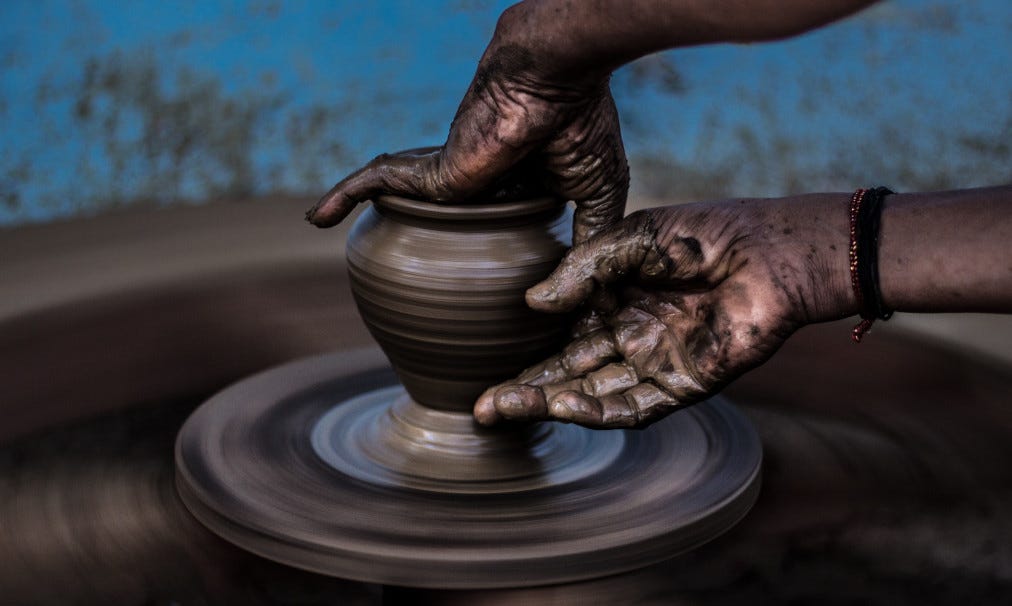Team Composition
When a potter begins to throw a pot, she picks up a lump of clay, shapes it into a rough sphere, and throws it onto the spinning potter's wheel. It may land off-center, and she must carefully begin to shape it until, it is a smooth cylinder. Then she works the clay, stretching and compressing it as it turns. First it is a tower, then it is like a squat mushroom. Only after bringing it up and down several times does she slowly squeeze the revolving clay until its walls rise from the wheel. She cannot go on too long, for the clay will begin to "tire" and then sag. She gives it the form she imagines, then sets it aside. The next day, the clay will be leather hard, and she can turn it over to shape the foot. Some decoration may be scratched into the surface. Eventually, the bowl will be fired, and then the only options are the colors applied to it; its shape cannot be changed.
This is how we shape all the situations in our lives. We must give them rough shape and then throw them down into the center of our lives. We must stretch and compress, testing the nature of things. As we shape the situation, we must be aware of what form we want things to take. The closer something comes to completion, the harder and more definite it becomes. Our options become fewer, until the full impact of our creation is all that there is. Beauty or ugliness, utility or failure, comes from the process of shaping.
- Deng Ming-Dao, '365 Tao - Daily Meditations
Building a high-performance team from scratch is just as difficult as turning a low-performing team into a high-performing team. However, there are very different reasons why each of these scenarios are difficult.
Like the potter beginning with a lump of clay, when forming a new team we must understand what we have to work with and have a clear idea of the outcomes we want. As we shape the team, we have to be mindful of how the individuals on the team are changing - or not - and whether those changes are moving toward the outcome. If not, we either need to change the desired outcome or alter the material we have to work with, that is, change out one or more people so that the shape of the team is better suited to reaching the desired outcome. It is also important to monitor the speed at which the team is formed or shaped. Too fast, and the team may not coalesce in a way that is healthy or productive. Too slow and they may not coalesce at all, they may "tire" of the slow pace and disengage.
With existing teams, we may have a limited range of options to change the roster. This is more like the an existing piece of pottery that has been fully set and baked. We may have to work with it as it is because the consequences of breaking it up are too costly or disruptive. Or we many need to break it into pieces because the consequences of leaving it in place is the expensive, perhaps even toxic, option.
Photo by SwapnIl Dwivedi on Unsplash




